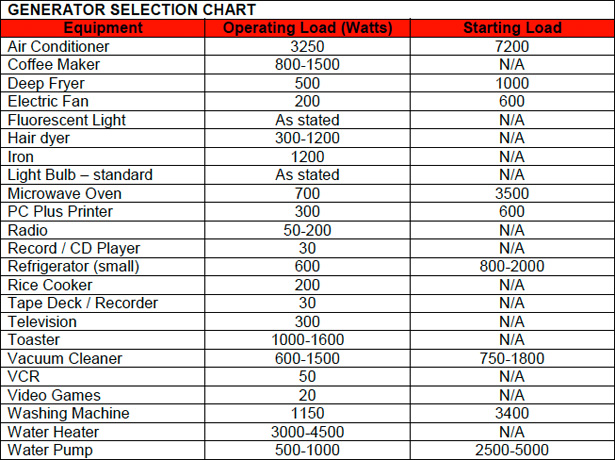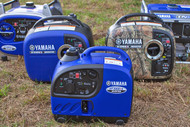What Size Generator Do I Need?
20th Jun 2019
You will have to work the amount of watts that the tools / appliances you’ll be running use, and remember that with some appliances or tools the number wattage that is listed on the appliance is not an exact representation of the amount that it takes to run it. For instance, a 900w microwave simply means that’s how much power the microwave itself puts out. The key point to remember is that a appliance will always require more power to run than the amount of power it puts out.
You need to figure exactly how much wattage your appliances require, look at the data tag by the manufacturer. This is the tag on the unit that lists volts, amps, horsepower, cycles, phase, etc. Most often, appliances list their power consumption in amps rather than in watts. In order to get the watts the device requires to run you simply multiply the number of amps by the number of volts it lists.
Another factor you will need to calculate is the starting wattage. What this means is that some appliances, such as those that contain an electric motor, require more watts to start up than to actually run. These include refrigerators, air conditioners, power tools, air compressors, bore pumps to name a few. To calculate the starting watt requirement, with most appliances it is generally 2 to 3 times more than the running watt requirement.
Make a list of all the appliances / tools you wish to run at the one time, and once you have compiled an accurate list of what you will be operating, you can calculate the maximum power requirements.
So for example, if you’re planning to run a bar fridge (200W) with toaster (800W), TV (150W) and a portable fan (100W) at the same time, you’re looking at 1250W.
Then work out which of these appliances has the highest starting power, and add that amount to the total. So if the bar fridge has the highest starting power of 600W, the total is 1250 + 600 = 1850W.
If your list does not include any devices that use electric motors, simply add the power (running) requirements of all the items on your list to obtain the maximum power needed.
With this total calculated , you would need a generator with at least 1850 watts of continious power to run these appliances all together. But we always advise people to get a generator with slightly more than you need, as you don’t want to risk overloading it… Selecting a generator that doesnt have a continious output of this total means you won’t be able to start or run your required appliances when you need them most.
Also, most generators can sustain only 80% of their maximum power for the long haul. So if you continuously push your generator to over 80% of its maximum power, you will shorten its life and risk damaging the appliances connected to it. While you don’t want to go too big, make sure you get something slightly more powerful than you need.






